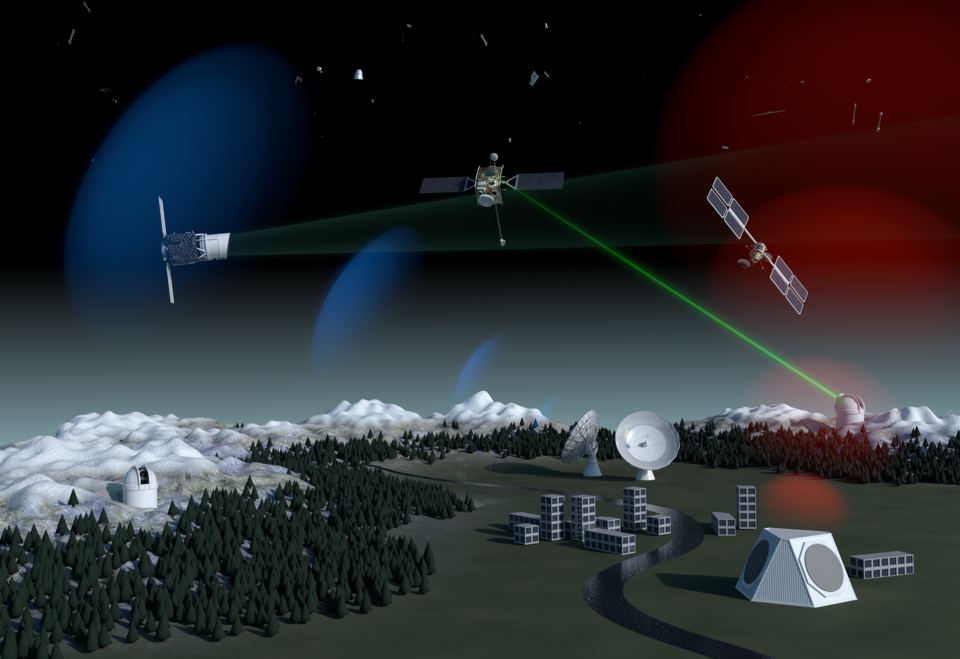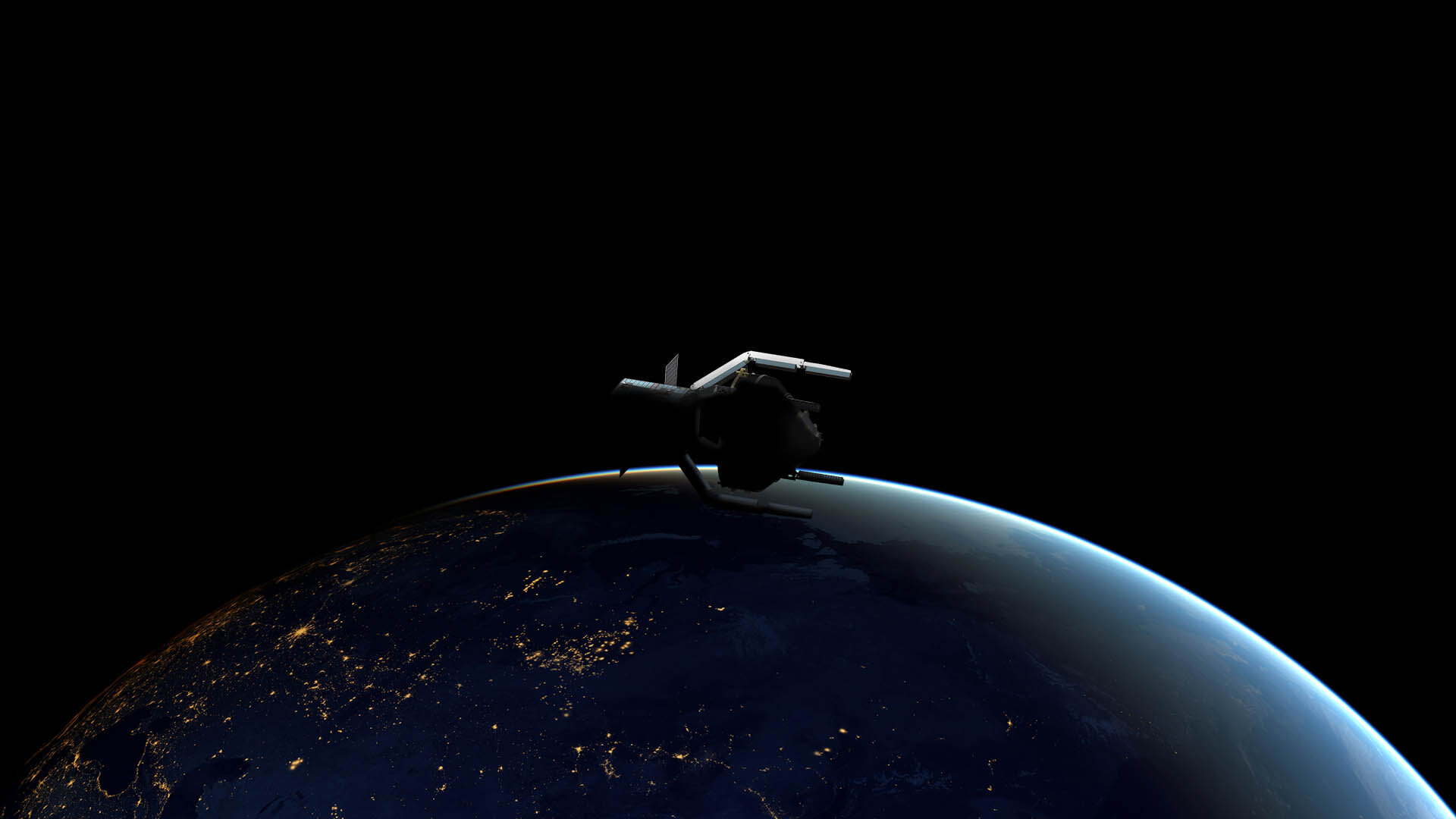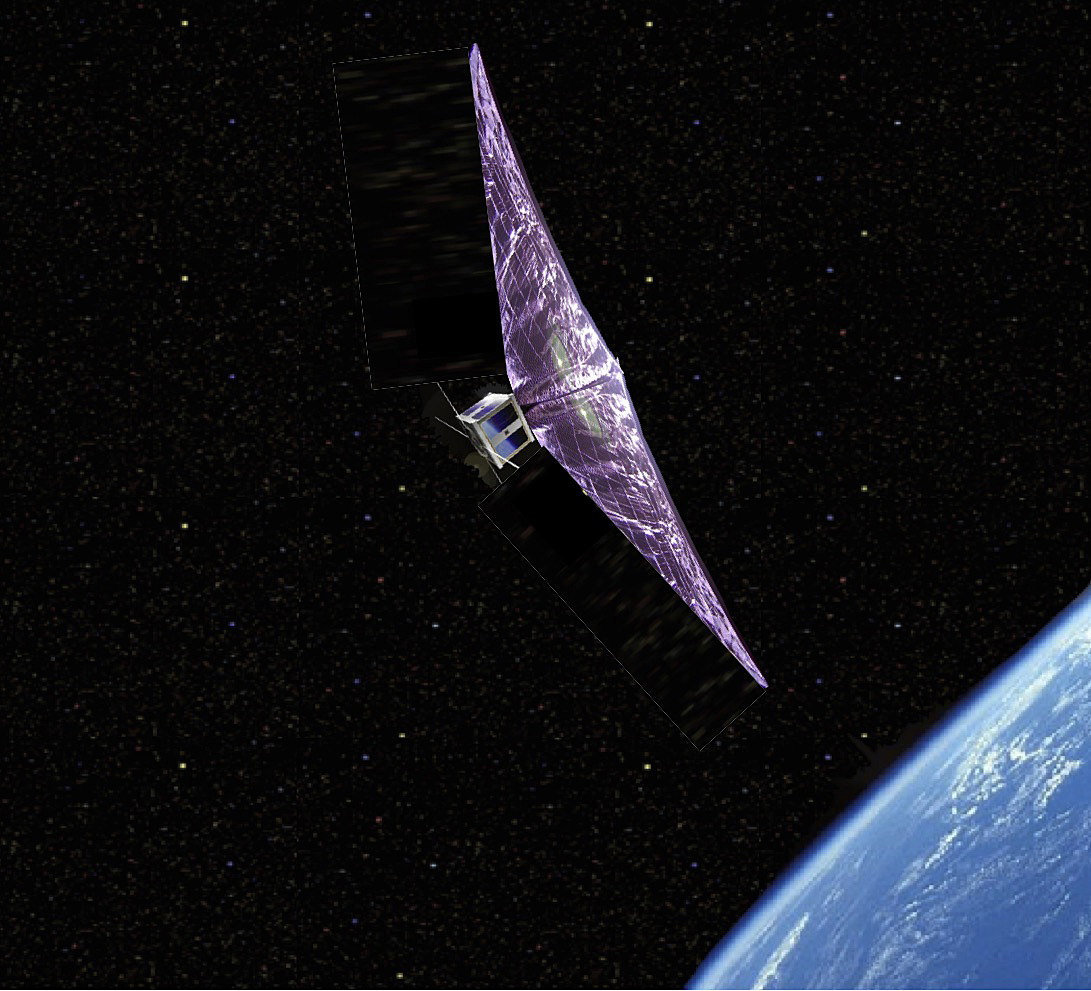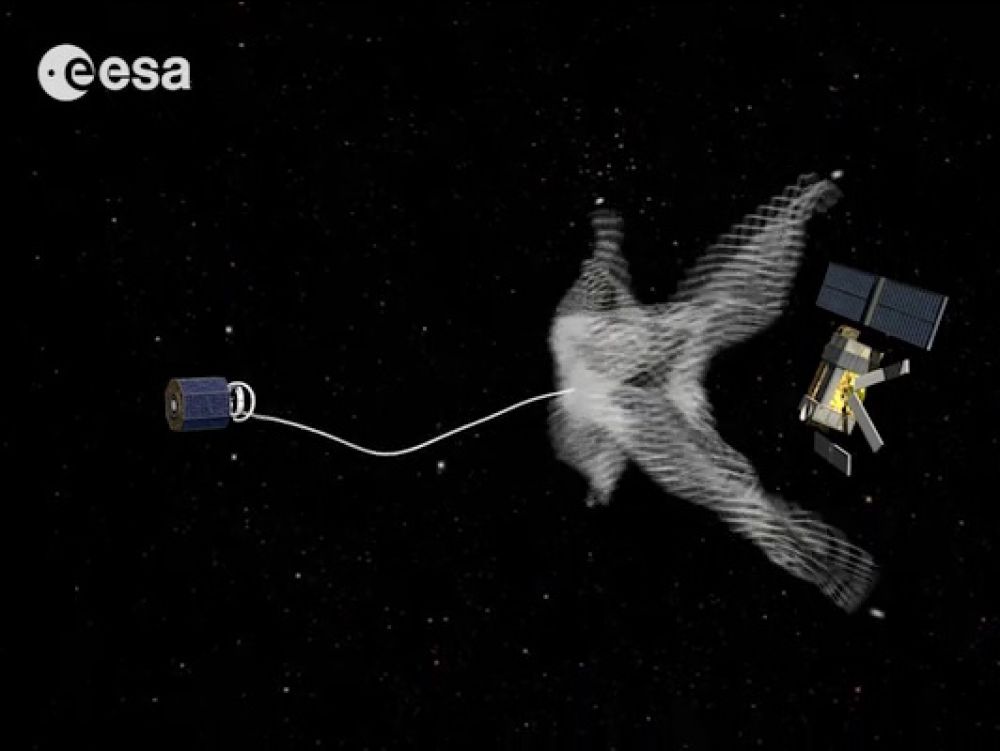Founded in 2016, Menlo Park, California-based LeoLabs, is a mind-blowing company. They have built, and continue to expand, a network of ground-based, phased array radars worldwide to keep track of the thousands of operational satellites, defunct satellites, spent rocket bodies, and pieces of debris in orbit around the Earth. Not only is their radar technology ground-breaking, but they have built a spectacular, if not a little terrifying, digital visualization of the traffic in space that is free for the public to explore.
Continue reading “Terrify yourself with LeoLabs’ visualization of satellites and space debris around Earth”First Laser Space Debris Detection Made… in Daylight
A new technique may prove to be a powerful tool in the battle to mitigate space debris.
As the Space Age continues into its seventh decade, space debris is now growing at an exponential rate. Most of this debris is in Low Earth Orbit (LEO), and ranges from bus-sized discarded rocket boosters and defunct satellites, to tiny millimeter-sized fragments.
Continue reading “First Laser Space Debris Detection Made… in Daylight”An Upcoming ESA Mission is Going to Remove one Piece of Space Junk From Orbit
While working at the NASA Johnson Space Center during the 1970s, astrophysicist Donald Kessler predicted that collisions between space debris would become increasingly common as the density of space debris increases in orbit around the Earth – creating a cascading effect. Since 2005, the amount of debris in orbit has followed an exponential growth curve, confirming Kessler’s prediction.
Given that the problem is only going to get worse in the coming years, there is a growing demand for technologies that can remove space debris. Following a competitive process, the ESA recently contracted the Swiss startup ClearSpace Today to create the world’s first debris-removing space mission. This mission, known as ClearSpace-1, is expected to launch by 2025 and will help pave the way for more debris removal missions.
Continue reading “An Upcoming ESA Mission is Going to Remove one Piece of Space Junk From Orbit”Can We Use Special Sails To Bring Old Satellites Back Down To Earth?
The growing problem of space debris in LEO (Low-Earth Orbit) is garnering more and more attention. With thousands of satellites in orbit, and thousands more on the way, our appetite for satellites seems boundless. But every satellite has a shelf-life. What do we do with them when they’ve outlived their usefulness and devolve into simple, troublesome space debris?
Continue reading “Can We Use Special Sails To Bring Old Satellites Back Down To Earth?”Satellites Equipped With a Tether Would be Able to De-Orbit Themselves at the end of Their Life
There’s no denying it, we are facing an orbital debris problem! As of January 2019, the ESA’s Space Debris Office estimates that there are at least 34,000 pieces of large debris in Low Earth Orbit (LEO) – a combination of dead satellites, spent rocket stages, and other assorted bits of space junk. And with thousands of satellites scheduled to be launched in the next decade, that problem is only going to get worse.
This is a situation that cries out for solutions, especially when you consider the plans to commercialize LEO and start sending crewed missions to deep space in the coming years. A team of scientists from the Universidad Carlos III de Madrid (UC3M) has come up with a simple but elegant idea: equip future satellites with a tether system so they can de-orbit themselves at the end of their lives.
Continue reading “Satellites Equipped With a Tether Would be Able to De-Orbit Themselves at the end of Their Life”India Destroyed a Satellite With a Missile Last Week, and Pieces Were Thrown Into an Orbit That Risks the International Space Station
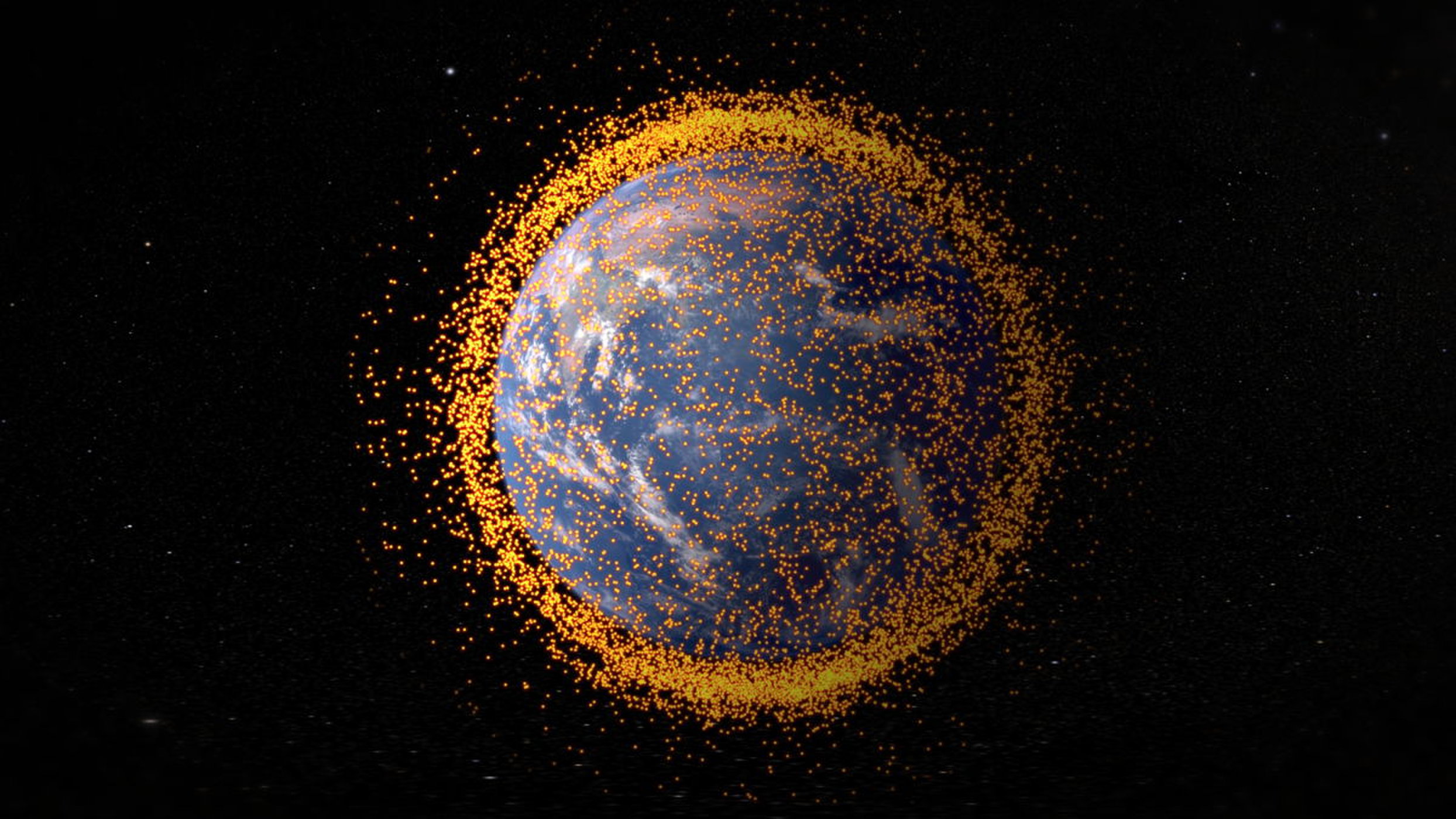
Last week, in a move that left many perplexed, the nation of India destroyed one of its own satellites. According to a statement made by Prime Minister Narendra Modi, this operation (“Mission Shakti”) was conducted using a new type of anti-satellite missile. With this one act, Modi claimed that India had “established itself as a space power”, effectively joining the United States, Russia and China.
Unfortunately, this demonstration has created a cloud of orbital debris in Low Earth Orbit (LEO). According to a recent statement made by NASA Administrator Jim Bridenstine, this debris poses an “unacceptable” threat to the International Space Station. In this sense, by flexing its muscle as a space power, India may have caused some serious disruption to international efforts in space.
Continue reading “India Destroyed a Satellite With a Missile Last Week, and Pieces Were Thrown Into an Orbit That Risks the International Space Station”British Satellite Tests its Space Junk Harpoon
Last summer, a new type of debris-hunting satellite was released from the International Space Station (ISS). It’s known as the RemoveDebris spacecraft, a technology-demonstrator developed by Surrey Satellite Technology Ltd and the Surrey Space Center. The purpose of this satellite is to test whether satellites equipped with targeting software, a debris net and a harpoon are effective at combating space debris.
For the past few months, this spacecraft has been conducting a series of Active Debris Removal (ADR) exercises. About a week ago, according to a recent statement, the RemoveDebris satellite tested out its harpoon for the first time. As you can see from the video, the satellite successfully demonstrated its harpoon system and verified its ability to secure space debris and keep it from flying away.
Continue reading “British Satellite Tests its Space Junk Harpoon”Micrometeorite Damage Under the Microscope
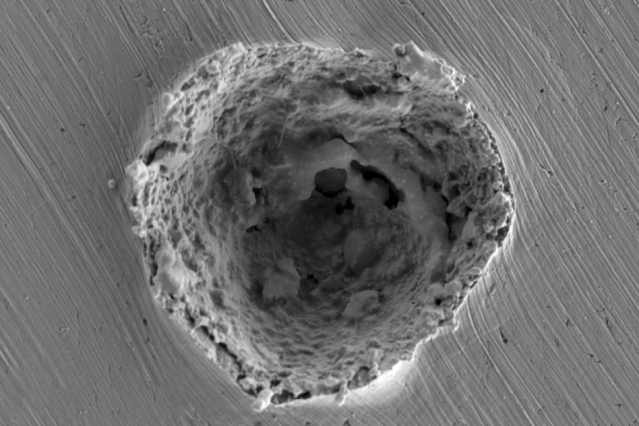
If there’s one thing that decades of operating in Low Earth Orbit (LEO) has taught us, it is that space is full of hazards. In addition to solar flares and cosmic radiation, one of the greatest dangers comes from space debris. While the largest bits of junk (which measure more than 10 cm in diameter) are certainly a threat, the real concern is the more than 166 million objects that range in size from 1 mm to 1 cm in diameter.
While tiny, these bits of junk can reach speeds of up to 56,000 km/h (34,800 mph) and are impossible to track using current methods. Because of their speed, what happens at the moment of impact has never been clearly understood. However, a research team from MIT recently conducted the first detailed high-speed imaging and analysis of the microparticle impact process, which will come in handy when developing space debris mitigation strategies. Continue reading “Micrometeorite Damage Under the Microscope”
A New Solution to the Space Junk Problem. Spacecraft with Plasma Beams to Force Space Junk to Burn Up
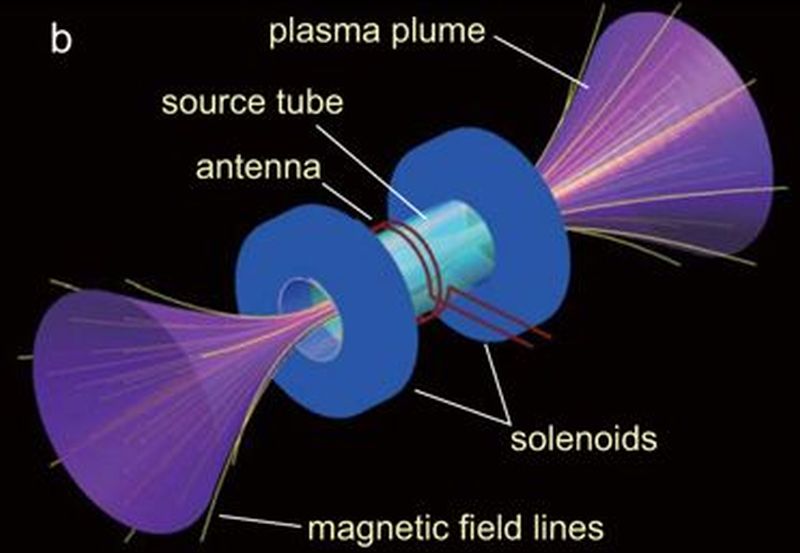
Space junk is a growing problem. For decades we have been sending satellites into orbit around Earth. Some of them de-orbit and burn up in Earth’s atmosphere, or crash into the surface. But most of the stuff we send into orbit is still up there.
This is becoming an acute problem as years go by and we launch more and more hardware into orbit. Since the very first satellite—Sputnik 1—was launched into orbit in 1957, over 8000 satellites have ben placed in orbit. As of 2018, an estimated 4900 are still in orbit. About 3000 of those are not operational. They’re space junk. The risk of collision is growing, and scientists are working on solutions. The problem will compound itself over time, as collisions between objects create more pieces of debris that have to be dealt with.
A Satellite With a Harpoon, Net and Drag Sail to Capture Space Junk is in Orbit and Will be Tested Soon
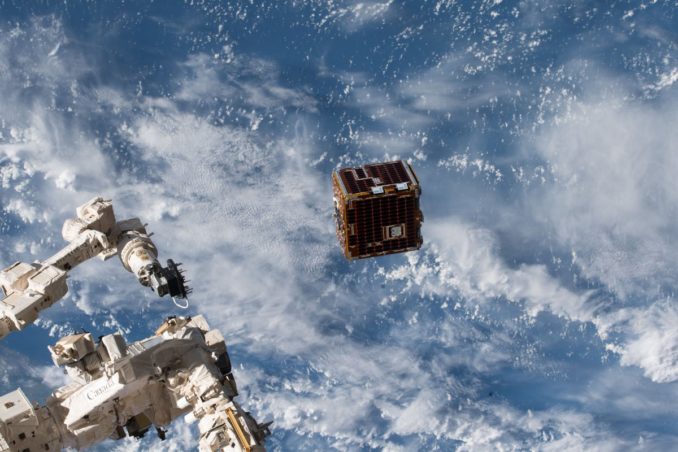
After almost seventy years of spaceflight, space debris has become a rather serious problem. This junk, which floats around in Low Earth Orbit (LEO), consists of the spent first rocket stages and non-functioning satellites and poses a major threat to long-term missions like the International Space Station and future space launches. And according to numbers released by the Space Debris Office at the European Space Operations Center (ESOC), the problem is only getting worse.
In addition, space agencies and private aerospace companies hope to launch considerably more in the way of satellites and space habitats in the coming years. As such, NASA has begun experimenting with a revolutionary new idea for removing space debris. It is known as the RemoveDebris spacecraft, which recently deployed from the ISS to conduct a series of Active Debris Removal (ADR) technology demonstrations.
This satellite was assembled by Surrey Satellite Technology Ltd. and the Surrey Space Center (at the University of Surrey in the UK) and contains experiments provided by multiple European aerospace companies. It measures roughly 1 meter (3 feet) on a side and weighs about 100 kg (220 lbs), making it the largest satellite deployed to the ISS to date.
The purpose of the RemoveDebris spacecraft is to demonstrate the effectiveness of debris nets and harpoons at capturing and removing space debris from orbit. As Sir Martin Sweeting, the Chief Executive of SSTL, said in a recent statement:
“SSTL’s expertise in designing and building low cost, small satellite missions has been fundamental to the success of RemoveDEBRIS, a landmark technology demonstrator for Active Debris Removal missions that will begin a new era of space junk clearance in Earth’s orbit.”
Aside from the Surrey Space Center and SSTL, the consortium behind the RemoveDebris spacecraft includes Airbus Defense and Space – the world’s second largest space company – Airbus Safran Launchers, Innovative Solutions in Space (ISIS), CSEM, Inria, and Stellenbosch University. The spacecraft, according to the Surrey Space Center’s website, consists of the following:
“The mission will comprise of a main satellite platform (~100kg) that once in orbit will deploy two CubeSats as artificial debris targets to demonstrate some of the technologies (net capture, harpoon capture, vision-based navigation, dragsail de-orbitation). The project is co-funded by the European Commission and the project partners, and is led by the Surrey Space Centre (SSC), University of Surrey, UK.”
For the sake of the demonstration, the “mothership” will deploy two cubesates which will simulate two pieces of space junk. For the first experiment, one of the CubeSats – designated DebrisSat 1 – will inflate its onboard balloon in order to simulate a larger piece of junk. The RemoveDebris spacecraft will then deploy its net to capture it, then guide it into the Earth’s atmosphere where the net will be released.
The second CubeSat, named DebrisSat 2, will be used to test the mothership’s tracking and ranging lasers, its algorithms, and its vision-based navigation technology. The third experiment, which will test the harpoon’s ability to capture orbiting space debris, is set to take place next March. For legal reasons, the harpoon will not be tested on an actual satellite, and will instead consist of the mothership extending an arm with a target on the end.
The harpoon will then be fired on a tether at 20 meters per second (45 mph) to tests it accuracy. After being launched to the station back on April 2nd, the satellite was deployed from the ISS’ Japanese Kibo lab module on June 20th by the stations’ Canadian robotic arm. As Guillermo Aglietti, the director of the Surrey Space Center, explained in an interview with SpaceFlight Now before the spacecraft was launched to the ISS:
“The net, as a way to capture debris, is a very flexible option because even if the debris is spinning, or has got an irregular shape, to capture it with a net is relatively low-risk compared to … going with a robotic arm, because if the debris is spinning very fast, and you try to capture it with a robotic arm, then clearly there is a problem. In addition, if you are to capture the debris with a robotic arm or a gripper, you need somewhere you can grab hold of your piece of debris without breaking off just a chunk of it.”
The net experiment is currently scheduled for September of 2018 while the second experiment is scheduled for October. When these experiments are complete, the mothership will deploy its dragsail to act as a braking mechanism. This expandable sail will experience collisions with air molecules in the Earth’s outer atmosphere, gradually reducing its orbit until it enters the denser layers of Earth’s atmosphere and burns up.
This sail will ensure that the spacecraft deorbits within eights weeks of its deployment, rather than the estimated two-and-half years it would take to happen naturally. In this respect, the RemoveDebris spacecraft will demonstrate that it is capable of tackling the problem of space debris while not adding to it.
In the end, the RemoveDebris spacecraft will test a number of key technologies designed to make orbital debris removal as simple and cost-effective as possible. If it proves effective, the ISS could be receiving multiple RemoveDebris spacecraft in the ftureu, which could then be deployed gradually to remove larger pieces of space debris that threaten the station and operational satellites.
Conor Brown is the external payloads manager of Nanoracks LLC, the company that developed the Kaber system aboard the Kibo lab module to accommodate the increasing number of MicroSats being deployed from the ISS. As he expressed in a recent statement:
“It’s wonderful to have helped facilitate this ground-breaking mission. RemoveDebris is demonstrating some extremely exciting active debris removal technologies that could have a major impact to how we manage space debris moving forward. This program is an excellent example of how small satellite capabilities have grown and how the space station can serve as a platform for missions of this scale. We’re all excited to see the results of the experiments and impact this project may have in the coming years.”
In addition to the RemoveDebris spacecraft, the ISS recently received a new tool for detecting space debris. This is known as the Space Debris Sensor (SDS), a calibrated impact sensor mounted on the exterior of the station to monitor impacts caused by small-scale space debris. Coupled with technologies designed to clean up space debris, improved monitoring will ensure that the commercialization (and perhaps even colonization) of LEO can begin.
Further Reading: Spaceflight Now, RemoveDEBRIS


